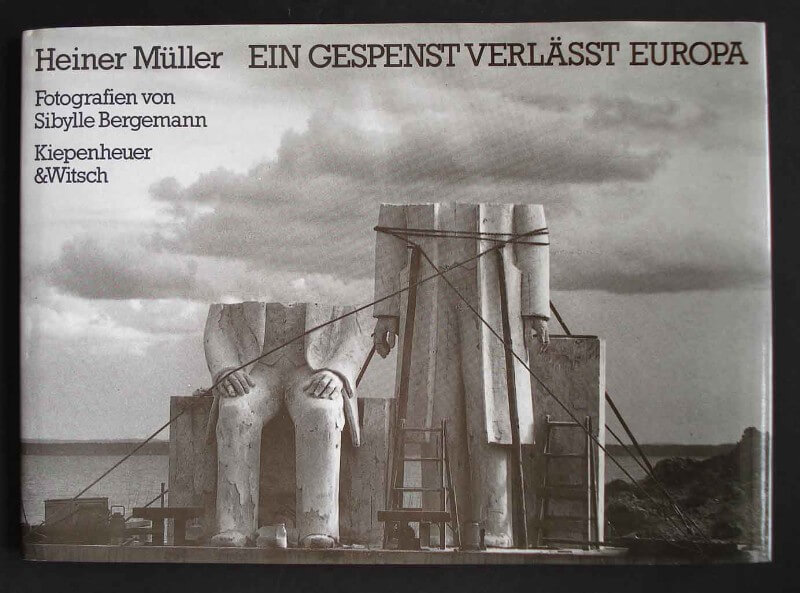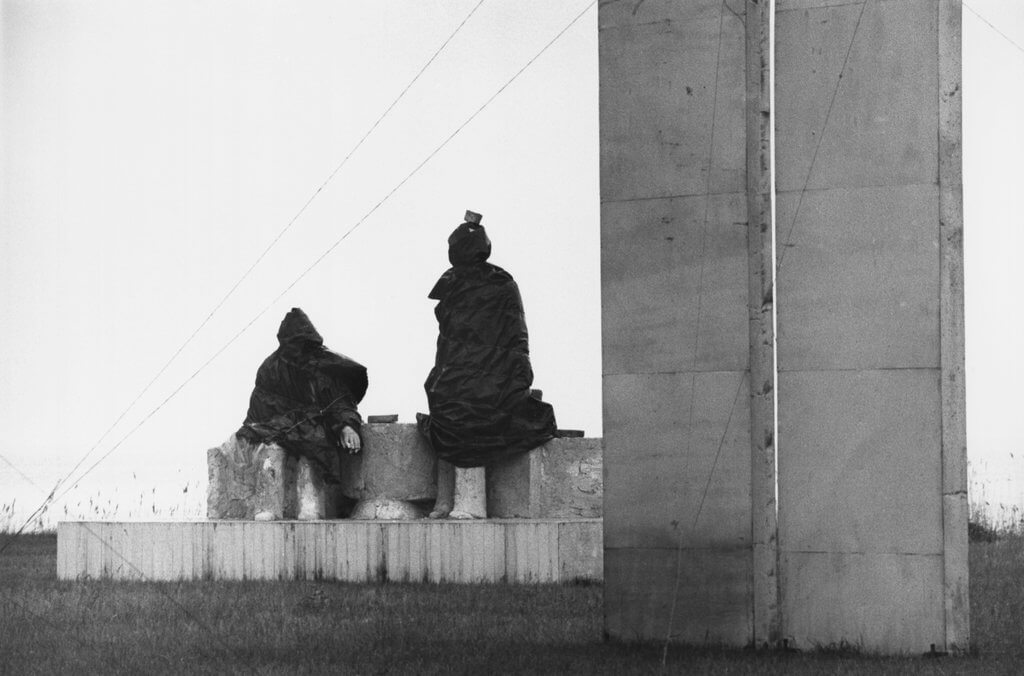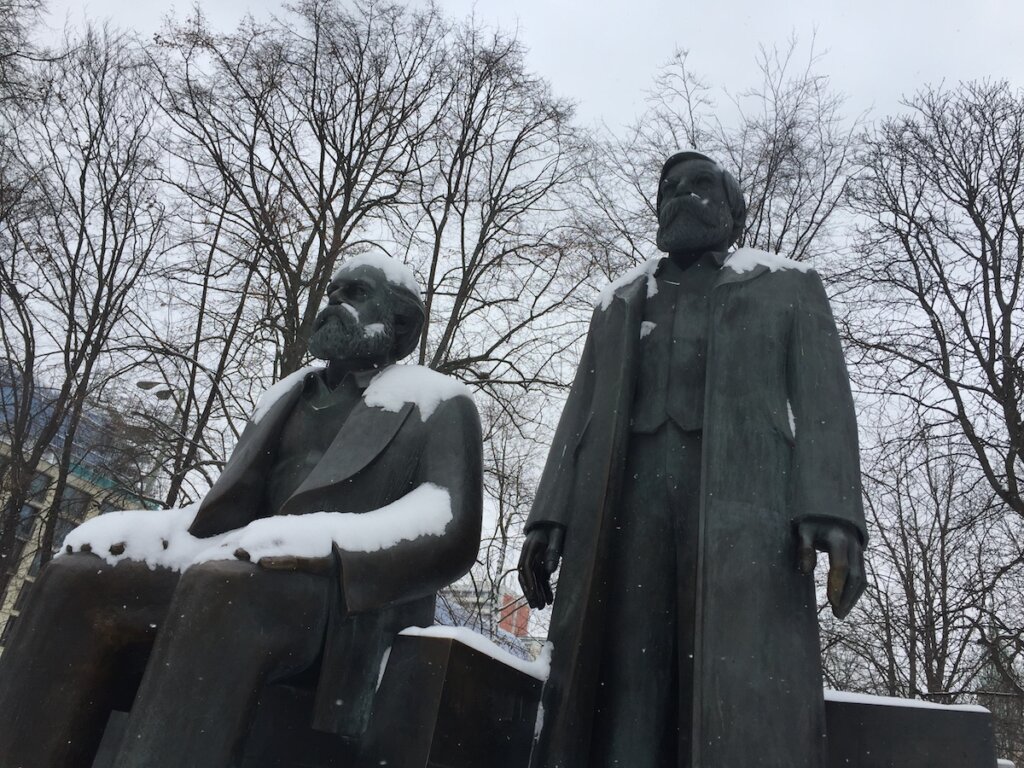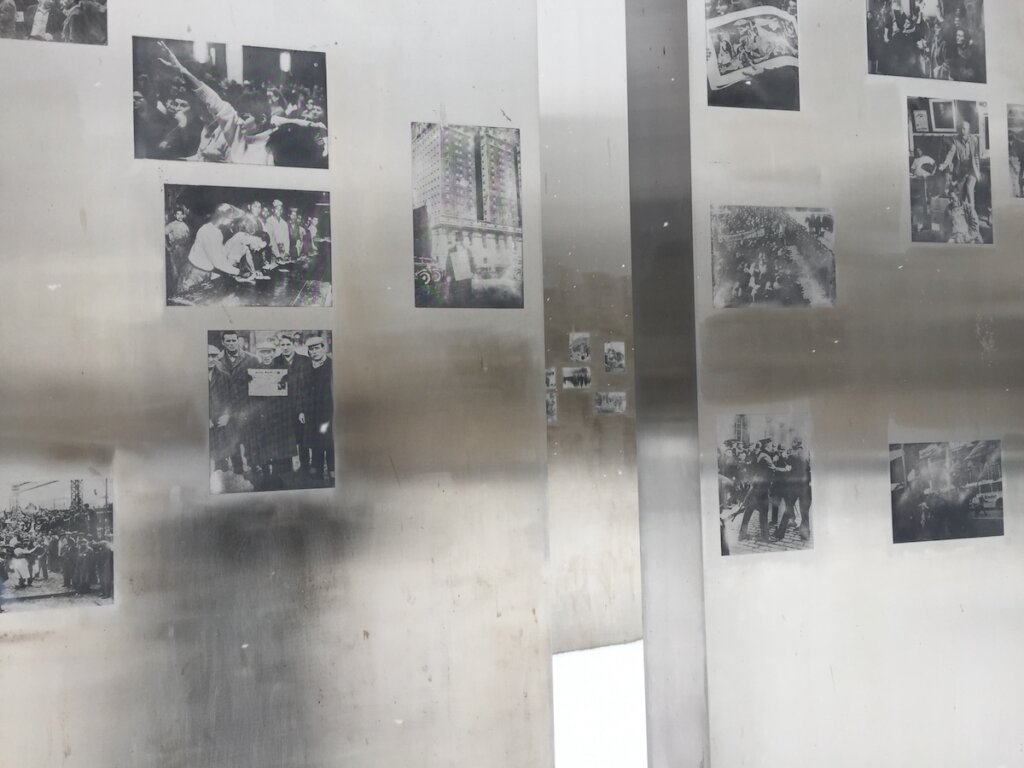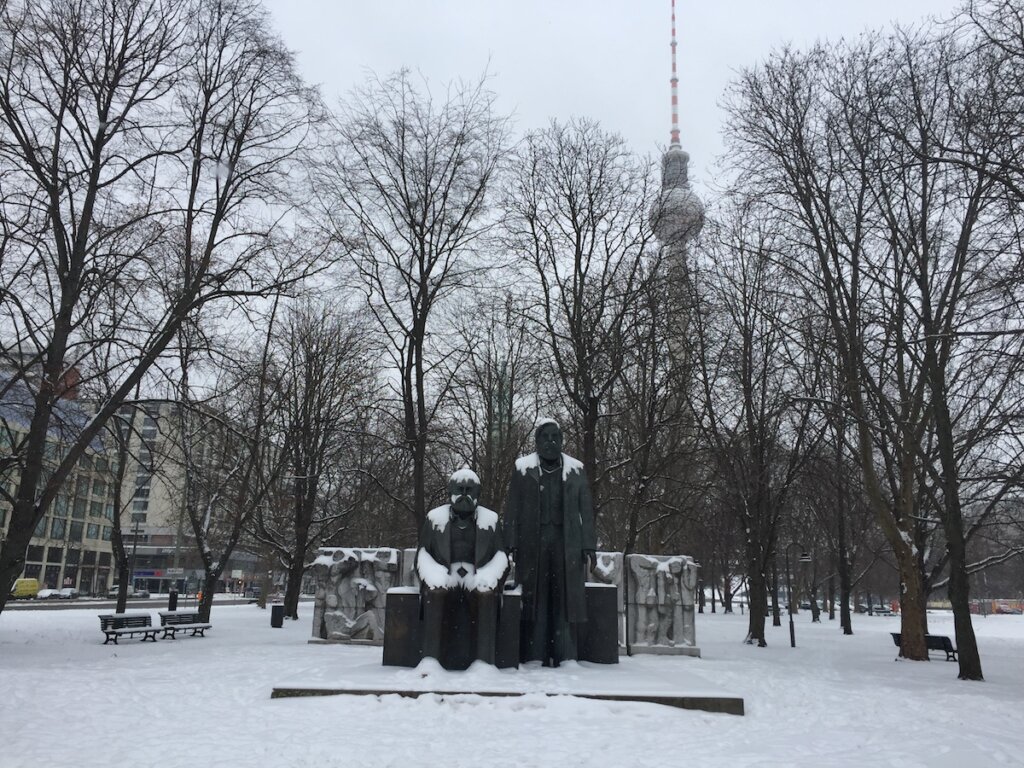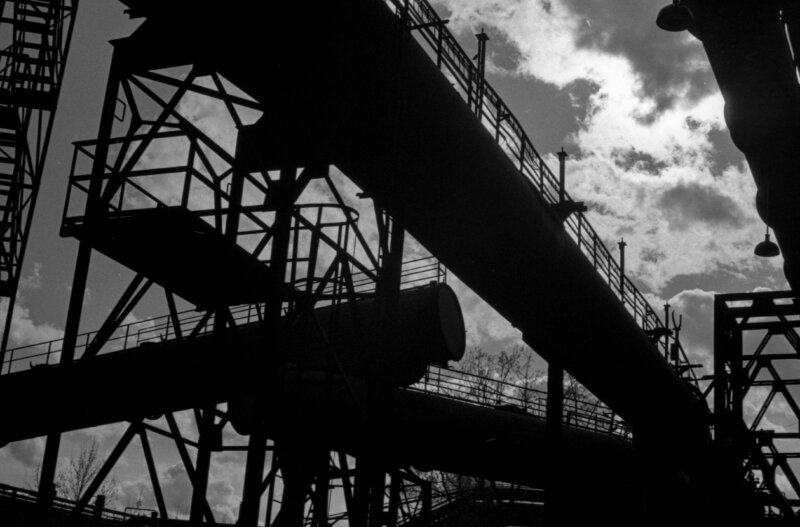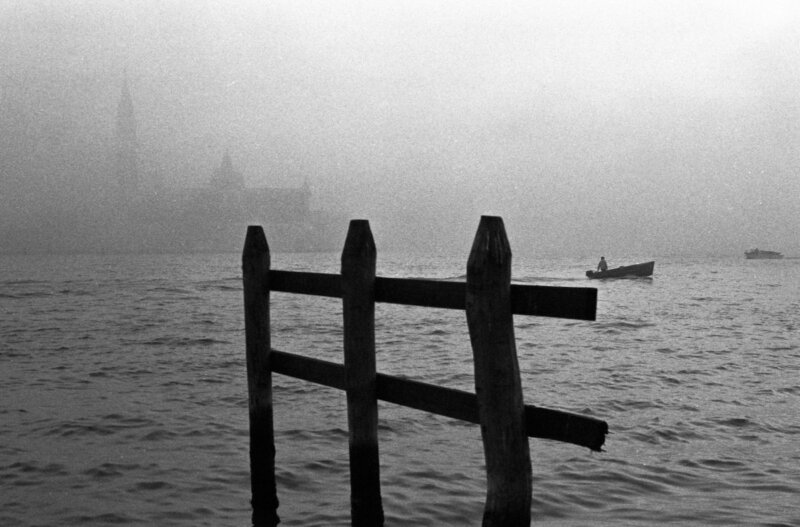photography
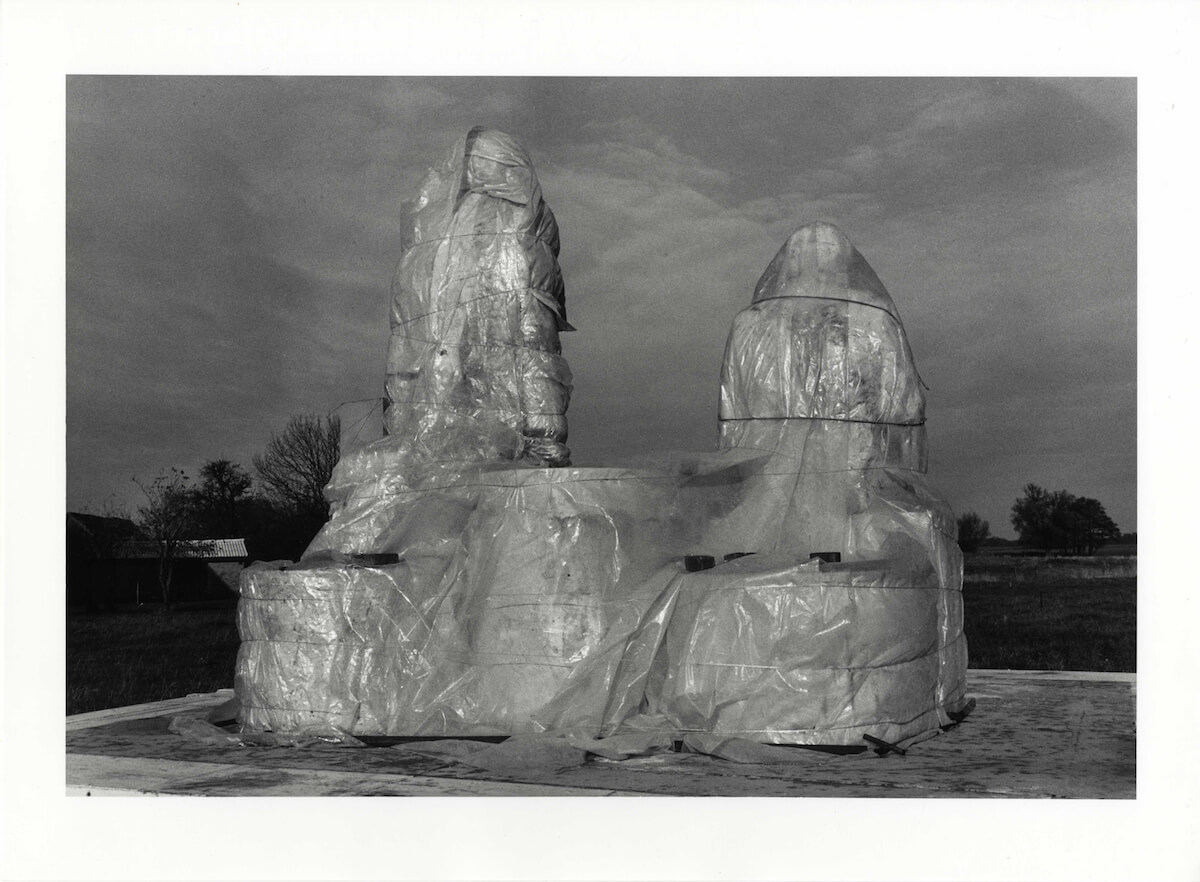
They are Dead. Wrapped in Plastic.
Sibylle Bergemann and her reportage about the Marx-Engels-Forum in Berlin, GDR.
How comes I am using the infamous TP incipit to write about Sibylle Bergemann and Berlin? The Berlin – David Lynch link is there, and for many, it has the form of the transcendental meditation debacle that happened in the mid-00s. [Here the full exhilarating video, especially min. 2:20]. The link I want to talk about is different, it is completely home-made-up, it has to do with film and photography and it is mainly a way to make the argument that art is always much clearer and quicker than politics.
The celebration for Berlin’s 750th birthday was approaching in 1976. Well, there was still a decade to go, but it was coming up. The East German government decided to celebrate by remodeling the most ancient part of town, called Nikolaiviertel, by rebuilding part of it (it had been heavily damaged in the war) and making space in its immediate vicinity to a large, modern, socialist new square. The Marx-Engels-Forum. As the name suggests, the public square was going to be dedicated to the two giants of socialist theory. The planned memorial to the greatness of their minds and actions is still impressive. It consists of (from the back forward): a large white marble wall, sculpted to represent the misery of humanity in the early-capitalist world; a giant sculpture of the two thinkers next to each other, one sitting and one standing; four steel walls arranged in a radial pattern departing from the two men, onto which photos are engraved of the communist revolutions around the world in the twentieth century.; finally, another depiction of humanity, this time free and round and almost floating.
The timing for the project is not the best. The entire sculpture is a symphony of propaganda, and when it gets installed on a brand new public space, in the middle of the city, East Berlin has about three years left to exist. Of course, nobody knows that for sure back then, but the songs of changing times become more visible every day. The paradox of this old-fashioned propaganda is quite clear to most people who cross the Mitte district of East Berlin in the late Eighties. Even to the skeptical eye, however, it remains part of an impressive urban planning project. The sculpture is placed in the heart of the city, with the back (the marble wall) to the west, and it proceeds to the east. The development (early capitalist society -> great thinkers -> freedom through the revolutions), as well as the gaze of the two giant men, follows the movement of freedom, from the west to the east, to Socialism, to the (brave) New World. To the right of the square is Nikolaiviertel, Germany’s past (it is the only medieval part of town), behind it the East German Parliament house, the TV tower in front. Impressive indeed.
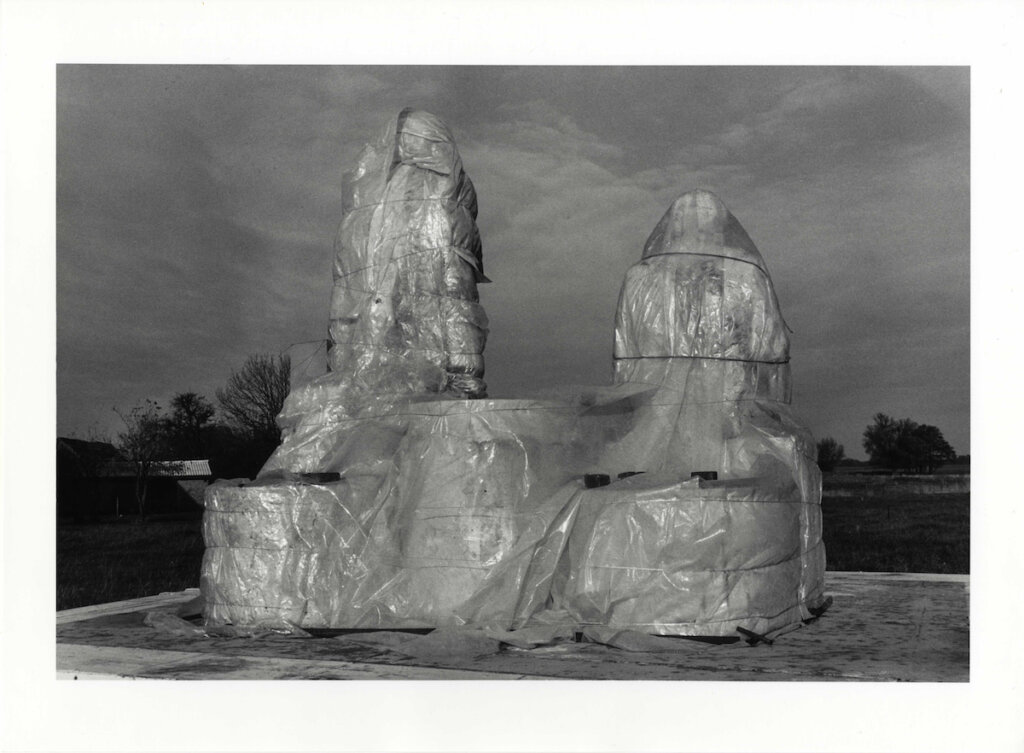
When the sculpture is conceived and the project starts, in the mid-seventies, the government decides to document the building and putting in place of the work of art. In their minds, this will be the making of one of Berlin’s most beautiful, modern, socialist places. They hire photographer Sybille Bergemann to do the documentation, which will take about a decade. The artwork is constructed in Usedom, in the north of Germany, and a couple of times a year Bergemann travels there to meet the involved artists (among which is her husband, Arno Fischer) and photograph the progress in their work and be a witness to the birth of Marx and Engels. Her photography is incredible. In about twenty images she manages to depict the construction of the memorial and the spirit of its time; she hints at satire, she points to the west, she is sharp as a spear but she is not using words, so no one replies. Her photos of Marx and Engels do not depict two heroes and/or saints. They show two old and decadent rockstars, who seem to have more in common with their counterparts, currently roaming the streets of West Berlin, than with their worshippers, in the near Eastern parliament.
Bergemann shoots the giants in the most inconvenient poses. Year by year her aesthetic approach detaches itself from state-encouraged realism, shifts towards a more intimate approach and lands at the end of the reportage in the realm of surrealism. We see Marx flying, we see the giants cut in two, we see them wrapped in heavy plastic. Exactly like Laura Palmer will be in the west, a couple of years later. And here’s my Lynch link. Of course there is no direct association between the great movie director and the East German artist. What strikes is that a kind of surrealist/postindustrial aesthetics is going around in Europe, in all Europe, beyond walls and borders. To the disadvantage of the glorified realism of the eastern block. The specter of the late eighties is the illusion of (re)(finally)united Europe, and this coincidental artistic parallel is a beautiful metaphor for it.
With the fall of the wall, East Germany becomes history overnight. The same amount of time it takes for Marx-Engels-Forum to go from memorial to the thinkers to memorial to an entire city, and state, increasingly so with the demolition of the neighboring East German Parliament house in the mid-00s. Sibylle Bergemann and Heiner Müller decide to publish her photography of the memorial right after the reunification of the Germanys. The result is a book whose intent is clear right from the title: “a specter is leaving Europe“. Here Bergemann’s photography finds its perfect collocation. Müller’s side of the book is poetry about East Germany, about the eastern block, about the fall of everything that was known, and the contradictions of the Heimat. Bergemann’s pictures of the Marx and Engels memorial seem to first find their historical sense when they meet this poetry. The book is an incredible work of art about some of the most topic years and protagonists of (East) German history.
